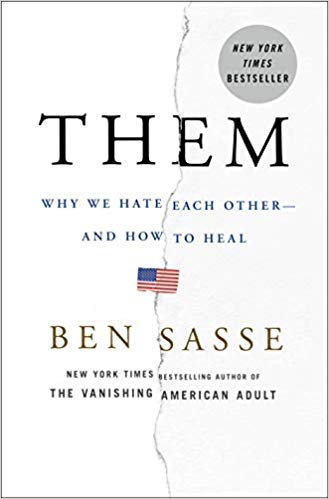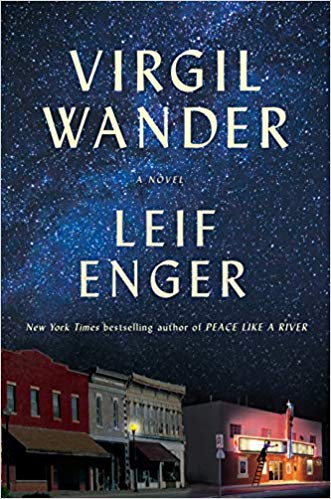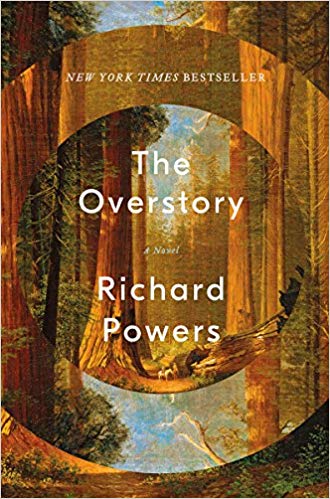My top pick for Winter 2018 – Virgil Wander, by Leif Enger – simply begs to be read all cozy on the sofa with a mug of hot chocolate.
If you liked A Gentleman in Moscow, this book is for you – a novel with likable characters, an intriguing plot, and a gentleness of spirit. It’s a novel of small town life with a big heart. Virgil Wander is a man who shouldn’t have survived a terrible car accident. On a cold, wet night, his car plunges off a precipice into Lake Superior far below. He lives – but he’s disoriented. He doesn’t feel precisely himself any more. It’s almost as if he has returned to life a different man. Who was he before, exactly? And who does he want to be now? A varied cast of characters help him figure things out – an old man looking for his long-lost son; the town’s most mysterious and possibly murderous resident; the small-town beauty, a Penelope, waiting for an Odysseus who may never return. As Virgil finds – and recreates – himself, love grows.
Love also grows in this year’s beautiful National Book Award winner, The Friend, by Sigrid Nunez. But first – it hurts.
Most of us have known friendships that could have been something more. We remember the boy we loved who remained “just a friend” – both the pain and joy of that friendship. Nunez’s award-winning novel tells the story of such a friendship, but one that lasts nearly a whole life long. Our narrator – “just a friend” – is left with all kinds of confused feelings and grief in the wake of a death. The deceased, her best friend, has left behind a third wife and an unwanted Great Dane. The narrator is convinced to take the dog despite living in a tiny New York City apartment, and difficulties and minor adventures follow. Really, not much happens. This isn’t a plot-driven, suspenseful novel. It’s not a feel-good novel, though it’s not a feel-bad novel either. Can grief ever help the griever? The Friend is a novel about complicated relationships and the ways we can possibly return to life among the living after a great sorrow lays us low.
It’s also a slim volume. You’ll reach the end before you want to. If you’re in the mood for something more expansive with a larger cast of characters and longer timeline, try The Overstory, by Richard Powers.
From the first page, you know you’re in the hands of a master storyteller – someone who can take you to the heights and the depths, to a place within and yet other than the everyday world. Like an ancient forest. As Stephen Sondheim reminds us, things happen when we go “Into the Woods”…
“Into the woods,
Without delay,
But careful not
To lose the way.
Into the woods,
Who knows what may
Be lurking on the journey.”
“The Overstory accomplishes what few living writers… could attempt,” says Barbara Kingsolver in The New York Times. “Using the tools of story, [Powers] pulls readers heart-first into a perspective so much longer-lived and more subtly developed than the human purview that we gain glimpses of a vast, primordial sensibility, while watching our own kind get whittled down to size.” It’s a massive oak tree of a book in ambition and size, shortlisted for the 2018 Man Booker Prize and named to numerous “Top 10 of 2018” lists.
For a simpler pleasure, try New York Times bestseller Where the Crawdads Sing, by Delia Owens.
Our heroine Kya is “the marsh girl,” growing up on the edges of civilization in swampy, coastal North Carolina in the 1950s. Abandoned by her family, she lives an isolated life in tune with the natural world. When a man is murdered not far from her remote home, she comes under suspicion. Where the Crawdads Sing enchants and glows in its descriptions of the natural world. I dare you to resist writing like this:
“The Great Blue Heron is the color of gray mist reflecting in blue water. And like mist, she can fade into the backdrop, all of her disappearing except the concentric circles of her lock-and-load eyes. She is a patient, solitary hunter, standing alone as long as it takes to snatch her prey. Or, eyeing her catch, she will stride forward one slow step at a time, like a predacious bridesmaid. And yet, on rare occasions she hunts on the wing, darting and diving sharply, swordlike beak in the lead.”
A few plot points (involving the characters, not the wildlife) don’t seem believable or likely to me, and they were a distraction. Given the novel’s staying power on the New York Times bestseller list, it’s safe to say that these are not a buzz kill for many. Delia Owens is co-author of the best-selling work of nonfiction, Cry of the Kalahari, set in Africa, and has written three other bestselling nonfiction works based on her life as a wildlife scientist.
For the nonfiction readers among us, I’d recommend Them: Why We Hate Each Other – And How to Heal, by Ben Sasse.
Sasse is a U.S. Senator from Nebraska, and his book is a thoughtful, wide-ranging look at the ways – and reasons – people are so angry in our country today. Sasse argues that it is loneliness and disconnectedness that breed the anger and toxic political culture so many live and breathe. His book is a call to arms to live in community with each other, and in particular with our neighbors. Sasse calls out those who polarize us, in political life and in newsrooms, but his book is not an angry one. It highlights what is special about our country, in the eyes of observers from the 18th century forward, and the ways that we continue to be an exceptional place. It is a book of hope and encouragement that does not ignore the ways we are failing each other right now. It is a book that reminds us of the greatest of all truths: Love grows. Especially when we nourish it.
* * *
Today’s post first ran at StyleBlueprint a few days ago. My deepest thanks always to Liza Graves for the opportunity!
Thank you so much, Jack Barnwell, for making sure I picked up Where the Crawdads Sing. You are such a model for me – a blessing. You live with courage, grace, stamina, and honesty. The life of the mind is never second to the life of the heart.










Thanks Jennifer! Great suggestions for the New Year!
Happy New Year, Tracy!! Have you read anything that needs to be on my list? I hope to see you soon! xoxo
A Florida librarian friend had just recommended
…Wander and compared it to …Moscow. She loved both. Then your endorsement. Can’t wait to start. Barbara Gregg Phillips
I’m so delighted to hear from you, Barbara! And I’ll love to hear what you think of Virgil Wander! xoxo
Thought you’d get a kick out of this.
Gary came up behind me as I was reading your latest post and said, “Hmm… Bacon on the bookshelf… I’d probably read a little more.”
That makes my day!! xoxo